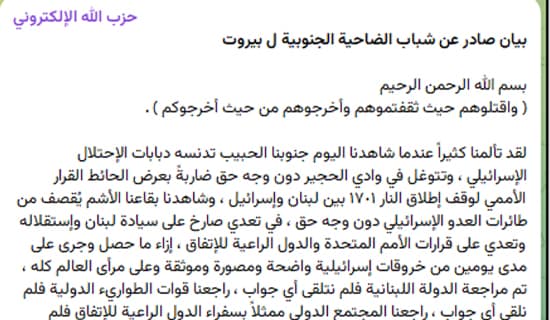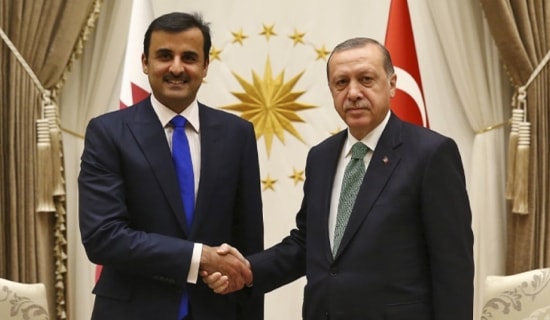Introduction
On April 3, 2024, Chinese Communist Party (CCP) media outlet China Military Online published an article, titled "Be Wary Of Japan Going Further Away From Its Pacifist Constitution."[1] The article, written members of the PLA Academy of Military Sciences, criticized the fact that the Japanese House of Representatives passed a defense budget of $52 billion for the new fiscal year. It then added: "Japan's perverse actions, such as developing offensive military strength, continuing to significantly increase the defense budget, and actively tying itself onto the US 'chariot'... will seriously threaten regional peace and stability. In this regard, regional countries must remain highly vigilant."
It is worth noting that, amid rising tensions with China, on April 7, 2024, Japan's Maritime Self-Defense Force and the militaries of the United States, Australia and the Philippines conducted a joint maritime drill within the Philippine exclusive economic zone in the South China Sea.[2] On April 11, 2024, Washington will also host Japanese Prime Minister Fumio Kishida and Philippine President Ferdinand Marcos Jr. for a trilateral summit to discuss the Chinese threat in the South China Sea.

Taking part in April 7, 2024 Maritime Cooperative Activity to support a free and open Indo-Pacific are (from left) the BRP Ramon Alcaraz, Australian frigate HMAS Warramunga, Japanese destroyer JS Akebono, and the littoral combat ship USS Mobile. (Source: Philippine Star)
China's Activities In East China Sea, Pacific Ocean, And Sea Of Japan
In March 2024, Japan's Defense Ministry published a report about China's activities in the East China Sea, Pacific Ocean, and Sea of Japan, stating that the People's Liberation Army (PLA) has rapidly expanded and intensified its activities in the maritime and aerial domains, including the escalation of unilateral activities.[3]

(Source: Mod.go.jp)
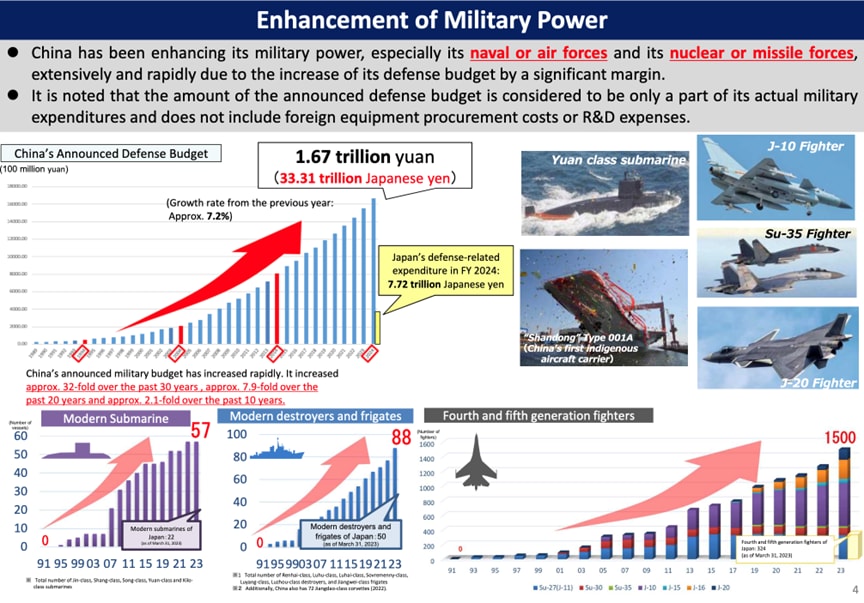
(Source: Mod.go.jp)
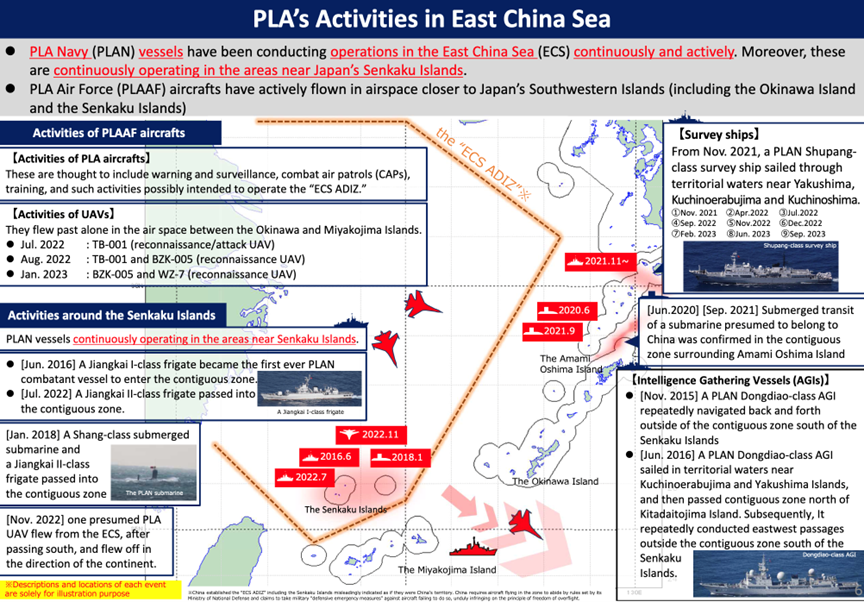
(Source: Mod.go.jp)

(Source: Mod.go.jp)

(Source: Mod.go.jp)
Special Advisor to MEMRI's China Media Studies Project Masigan: Japan Is "Taking The Lead, Among Asian Nations, In The Defense Of A Free And Open Indo Pacific"
Special Advisor to MEMRI's China Media Studies Project Andrew J. Masigan wrote in the media outlet Philippine Star that Japan is stepping up in its global role vis-a-vis China. Masigan wrote: "Even during the early days of China's economic ascent, Prime Minister Shinzo Abe recognized China's threat to global security. To this, he proposed that four great democracies – Japan, India, Australia and the United States – work together to quell China's hegemonic ambitions. This was in 2006. It was then that the world adopted Abe's concept of a Pacific region that included India and Australia. In 2018, the US changed the name of its Pacific combatant from the 'Pacific Command' to the 'Indo Pacific Command.' Abe was the first foreign leader whose doctrine became the center of American strategic thinking.
"Following a face-to-face meeting between PM Abe and President Trump, Japan and the US agreed that no single country should have sole dominion over the Pacific region. That the free flow of trade must be preserved at all cost, the same with the freedom of navigation and overflight in common waters. It was then that America adopted its Indo Pacific Strategy. Other democracies followed with their respective strategies. Abe's views were largely influenced by his grandfather, former prime minister Nobusuke Kishi. In the early 60s, PM Kishi recognized the threat of Russia and China to global security. He knew that Japan and the US needed to cooperate to keep the peace. PM Abe picked up where his grandfather left off... Fast forward to present day and Prime Minister Fumio Kishida continues to elevate Japan's posture as a global diplomatic player and peace maker."
Masigan then argued that Japan is stepping up where America falls short: "Japan continues to fill the void by extending military and economic aid to ASEAN, especially to the Philippines, which forms part of the first island chain. Japan's close cooperation with ASEAN has resulted in a convergence. Today, most ASEAN members, along with Japan, the US, Australia and South Korea, comprise the wall of resistance against China's expansionism and hegemonic ambitions.
"Stepping up to its role as regional peace keeper, Japan committed to spend 60 percent more on defense over five years – the highest defense buildup the world has seen since the Russia-America cold war. The Philippines benefits from this by way of the Official Security Assistance Agreement signed between President Marcos and Prime Minister Kishida last November 2023. Japan has stepped up in its global role. It is now taking the lead, among Asian nations, in the defense of a free and open Indo Pacific. Prime minister Shinzo Abe knew this day would come."[4]
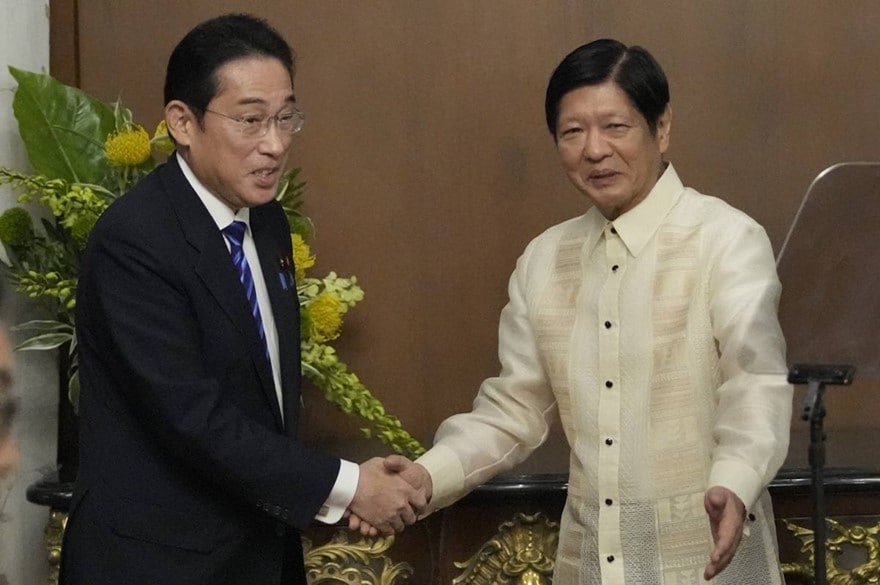
In November 2023, Japanese Prime Minister Fumio Kishida and Philippine President Ferdinand Marcos Jr. met at the Malacanang Palace in Manila and confirmed the expansion of their countries' security cooperation. "The two leaders shared serious concerns over the situation in the East and South China seas, with China's increasingly hegemonic moves there in mind, and affirmed that Japan and the Philippines will work together to maintain and strengthen a free and open international order based on the rule of law." (Source: Japannews.yomiuri.co.jp/politics/defense-security/20231104-147687/, November 4, 2023)
Below is China Military Online's article:
China Military Online: "Japan Has Been Shifting Its Defense Focus From The Northeast To The Southwest"
"Recently, the Japanese House of Representatives passed the defense budget of 7.9 trillion yen(USD 52 billion) for the new fiscal year. This amount represents a 16.5 percent increase from last year, reaching a new historical high. The continuous rise in defense budget provides assurance for the updating of weapons and equipment by the Japan Self-Defense Forces (JSDF), adjusting combat readiness deployments, and strengthening the military alliance between Japan and the US.
"As a key ally of the US in East Asia, Japan has actively worked with Washington's so-called 'Indo-Pacific Strategy.' Japan has maintained consistency with US policies in politics, diplomacy, and economics and taken various measures in the military domain to accelerate integration into the US military operational system.
"Japan accelerates the pace of equipment updates to enhance interoperability with US military equipment. In recent years, the JSDF has been vigorously promoting equipment updates, aiming to reduce problems encountered during joint operations with the US military and improve joint operational efficiency. In 2022, the US Air Force withdrew F-15C/D fighter jets from the Kadena Air Base in Okinawa, Japan, and planned to deploy more advanced fighter jets on a rotational basis. In line with US military standards, the JSDF plans to introduce more US equipment. In the defense budget for the new fiscal year, Japan intends to procure anti-ship missiles carried by F-35 fighter jets, joint air-to-surface standoff missiles, and Tomahawk long-range cruise missiles for Aegis ships. In addition, Japan and the US plan to jointly develop unmanned aircraft to enhance the effectiveness of air combat through coordinated operations with manned aircraft.
"Japan strengthens military deployments in the southwest direction in response to US military operational concepts. In the view of the Japanese side, the US military's planned Expeditionary Advanced Base Operations (EABO) is a convergence of the respective military strategic interests of the both sides, and Japan can provide relevant support for the implementation of EABO by the US military in the southwest direction. The preparations made by the US military for EABO can also strengthen defense in the southwest direction of Japan. In recent years, Japan has been shifting its defense focus from the northeast to the southwest. In terms of military deployment, Japan has concentrated its defense forces, island defense forces, and surface-to-ship missile units on southwestern islands such as Okinawa, Miyako, Ishigaki, and Yaeyama, thereby enhancing its control capabilities over relevant islands and surrounding waters. In terms of reconnaissance and surveillance, Japan utilizes the geographical advantages of the southwestern islands to strengthen intelligence collection in surrounding airspace and waters. In 2022, the Japan Ground Self-Defense Force (JGSDF) deployed a coastal surveillance unit of about 700 personnel at a base on Yonaguni Island to collect relevant information on aircraft and vessels passing through. In terms of base construction, Japan has begun to build an air force base on Mageshima Island to increase the number of airports and strengthen the depth of defense.

(Source: X)
China Military Online: "Regional Countries Must Remain Highly Vigilant"
"Japan increases the scale and frequency of joint training with the US military to strengthen the so-called 'deterrence' of the Japan-US alliance. It is reported that Japan and the US are seeking significant adjustments and upgrades to the US-Japan Treaty of Mutual Cooperation and Security and plan to reorganize the US Forces Japan command. Besides, according to the Guidelines for Japan-US Defense Cooperation, the two countries have initiated an alliance coordination mechanism to continuously expand the scope of integrated joint operations between the JSDF and the US military. In recent years, the scale and frequency of Japan-US joint exercises have increased simultaneously. While expanding the exercise area, they have paid more attention to the synergy between their operational concepts and breakthroughs in exercise projects. Statistics show that the number of joint training sessions between Japan and the US has increased fourfold in the past 10 years. The JGSDF and the US Marine Corps conducted Iron Fist joint island seizure training in Kyushu and Okinawa from February to March this year. Compared with previous years, the content of this year's joint training continued to increase, and the area expanded to the islands southwest of Japan.
"Japan's perverse actions such as developing offensive military strength, continuing to significantly increase the defense budget, and actively tying itself onto the US 'chariot' will only make Japan go further and further away from its pacifist constitution. In addition to exacerbating its own security dilemma and development difficulties, it will seriously threaten regional peace and stability. In this regard, regional countries must remain highly vigilant."
[1] Eng.chinamil.com.cn/OPINIONS_209196/Opinions_209197/16298509.html, April 3, 2024. The article was written by Liu Yi and Liu Yang, who are from the PLA Academy of Military Sciences.
[2] Nippon.com/en/news/yjj2024040600258, April 7, 2024.
[3] Mod.go.jp/en/d_act/sec_env/pdf/ch_d-act_a.pdf, March 2024.
[4] Philstar.com/opinion/2024/02/21/2334979/japan-steps-its-global-role, February 21, 2024.


